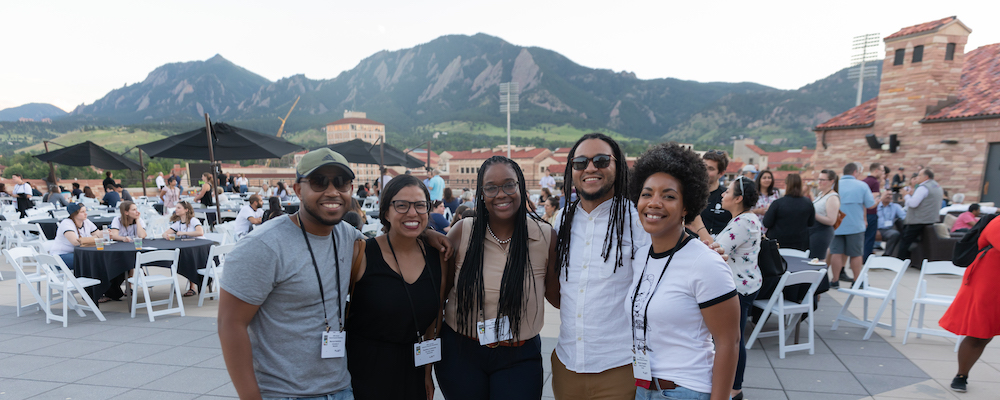 BAF founding fellows Marccus Hendricks, Santina Contreras, Benika Dixon, Hans Louis-Charles, and Nnenia Campbell at at the Natural Hazards Center Workshop in July 2019. The Workshop is one of the many opportunities BAF fellows have to network with hazards professionals and researchers. ©Natural Hazards Center/Chip Van Zandt, 2019.
BAF founding fellows Marccus Hendricks, Santina Contreras, Benika Dixon, Hans Louis-Charles, and Nnenia Campbell at at the Natural Hazards Center Workshop in July 2019. The Workshop is one of the many opportunities BAF fellows have to network with hazards professionals and researchers. ©Natural Hazards Center/Chip Van Zandt, 2019.
Those familiar with the Bill Anderson Fund will recognize the tremendous headway the organization has made in diversifying the hazards and disaster field by supporting the education and training of historically underrepresented individuals.
The organization, founded in 2014, provides numerous opportunities—including workshops, webinars, networking, mentorships, research sponsorship, and funding—for fellows to build robust connections and careers that advance the field.
Recruitment for the next cohort of Bill Anderson fellows are now open and due by December 1, 2020. Doctoral students from historically underrepresented groups who are in the first or second year of their programs are encouraged to fill out the application.
With that in mind, we asked Nnenia Campbell—one of the fund’s founding fellows, as well as a Natural Hazards Center alum and research associate—three questions about what participating in the program has meant for her career and scholarship.
1. What was the most useful element(s) of the fellowship for you?
As a BAF founding fellow, the most useful elements of the fellowship were the opportunities it afforded me to take on a leadership role in a growing organization and have a hand in its development. I learned many practical skills during the process, from webinar production, to fundraising, to program implementation. My cohort had wide leeway to design the kinds of experiences that we wanted to further our own professional development, and we ran with that.
Most importantly, though, I developed a network of other students from underrepresented backgrounds who shared my professional goals and interests. That might be taken for granted now, but before the BAF started, I only knew one other Black student in the entire disaster research community—Brandi Gilbert, who happened to also be enrolled at my same institution. We were few and far between, and there are just certain challenges and experiences common to students of color within graduate programs that aren't easily understood by our white counterparts.
I developed relationships that I know I'll be able to draw upon for the rest of my career. That alone is absolutely invaluable, and it's why so many BAF alumni have stayed involved in the organization to invest in other students who have entered the field after us.
2. Can you share any career advantages or other benefits you feel are attributable to BAF that you wouldn’t have been exposed to otherwise?
There is a level of visibility you gain as a BAF fellow that is unparalleled by other training programs. It's always a proud moment at the Natural Hazards Workshop in the summer to be able to introduce oneself as a member of the BAF community. Additionally, by being involved in the student council and working directly on student-led programming, I had opportunities to explore the field and invite scholars to participate in BAF events. That opened the door to relationships and collaborations with people I wouldn't have had a reason to reach out to otherwise.
3. Is there anything else you feel is important to share with potential nominees or nominators?
Joining the BAF provides more than just a line on one's CV. The BAF fellows and alumni are building a legacy that will change the direction of disaster research and practice. This isn't just a matter of representation, although that is tremendously important. It's about creating a professional community that has the capacity and the will to change the ways in which extreme events affect marginalized communities. We've come a long way in a short period, but at the same time, we're just getting started.